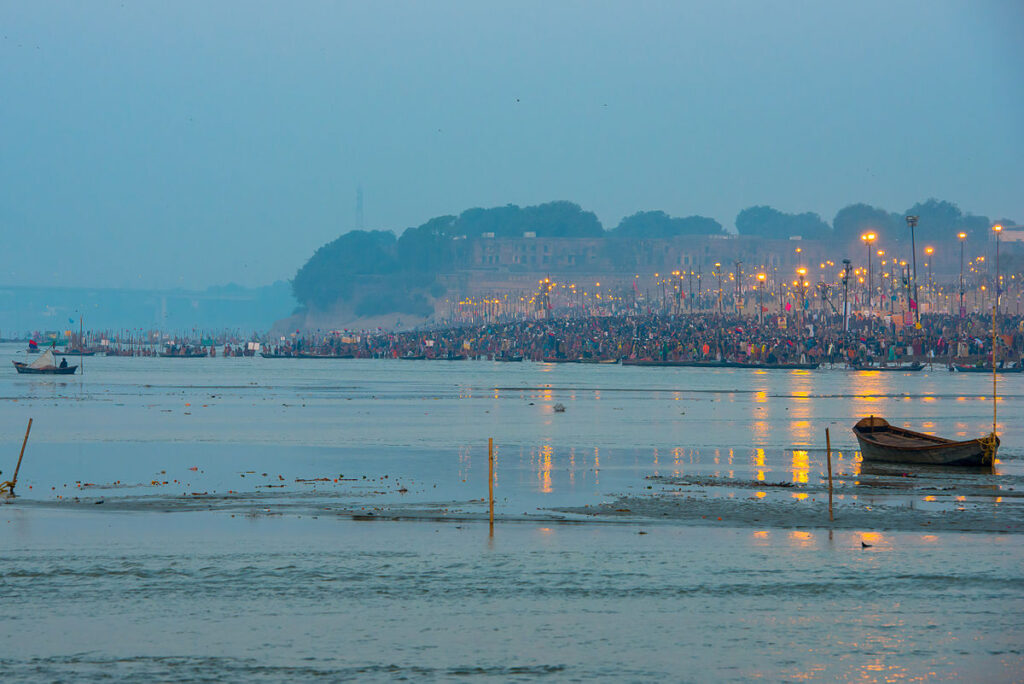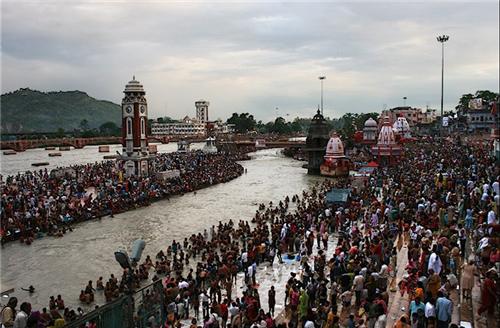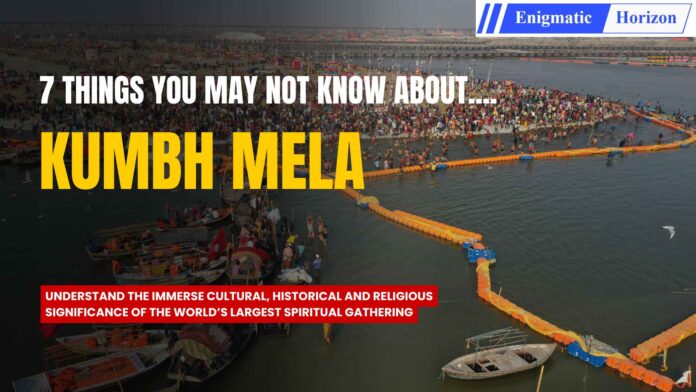The Maha Kumbh Mela, a festival rooted in Hindu culture and spirituality, is one of the grandest religious gatherings in the world. Millions of devotees gather at the confluence of the Ganges, Yamuna, and Saraswati rivers to take a holy dip, seeking salvation and purification. Of course, it is one of the most renowned festivals but there are many intriguing and lesser-known aspects of this sacred event. Here are seven interesting facts about the Maha Kumbh Mela that you might not have known about:
The World’s Largest Gathering
The Maha Kumbh Mela holds the record for being the largest peaceful gathering of humans on Earth. In the 2013 Maha Kumbh Mela, an estimated 120 million people participated over the course of 55 days. This sheer number surpasses many other global events in scale and significance.

The Event’s Mythological Origins
The festival’s roots trace back to the ancient Hindu myth of Samudra Manthan (churning of the ocean). It is believed that during a celestial battle between gods and demons over the nectar of immortality (Amrit), the nectar fell at four locations: Prayagraj, Haridwar, Ujjain, and Nashik. These places now host the Kumbh Melas.
Astronomical Significance
The timing of the Maha Kumbh Mela is determined by the positions of celestial bodies. It occurs when the planet Jupiter enters Aquarius and the Sun enters Capricorn during the Hindu month of Magha (January-February). This alignment is considered highly auspicious.
The Rare Maha Kumbh Mela
While the Kumbh Mela happens every 12 years in rotation at the four sacred locations, the Maha Kumbh Mela is even rarer, occurring only once every 144 years at Prayagraj. So, in 2025, we are experiencing a very rare event which not everyone gets to experience, something which even many of our grandparents or great grandparents might not have experienced! So, 2025 Maha Kumbh Mela is not just an extraordinary spiritual event marked by grander rituals and larger crowds, but it is something that occurs once in multiple lifetimes!
 A Temporary City
A Temporary City
The scale of the Maha Kumbh Mela is so massive that it creates a temporary city complete with roads, hospitals, sanitation systems, and electricity. In 2019, the Kumbh Mela site was recognized as the largest temporary city in the world by the Guinness World Records.
A UNESCO Intangible Cultural Heritage
In 2017, the Kumbh Mela was inscribed on the UNESCO Representative List of Intangible Cultural Heritage of Humanity. This recognition highlights the event’s cultural and spiritual significance and its role in promoting peace and unity.
Spiritual and Economic Impact
Beyond its religious importance, the Maha Kumbh Mela significantly impacts the local economy. The 2013 Maha Kumbh Mela contributed over $1.5 billion to the Indian economy, generating employment and boosting tourism. It is also a brilliant platform for showcasing India’s cultural heritage to the world.
Conclusion
The Maha Kumbh Mela is far more than just a religious festival. It is a celebration of faith, culture, and humanity. The event’s scale, historical roots, and spiritual essence make it a unique phenomenon, drawing millions from across the globe. Whether you seek spiritual enlightenment or cultural exploration, the Maha Kumbh Mela offers an unparalleled experience that might leave a lasting impression on you!
